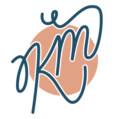Let’s face it: teacher professional development can be boring, and teachers can lose focus more often than not. Sometimes they briefly tune out to look at their phones or leave for a while, but sometimes they completely disengage, hiding behind their laptops to grade student work, plan lessons, catch up on emails, or even do some online shopping during the session!
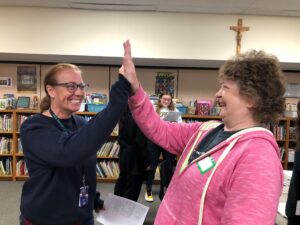
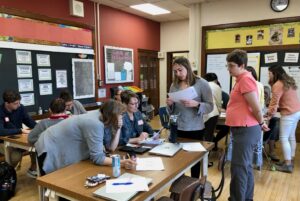
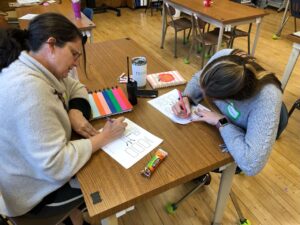
The Challenge of Faculty Engagement
How can teachers stay motivated during professional development? Can a PD session be inspiring and motivating? Absolutely! Research shows that effective teacher professional development programs are not just about content delivery—they are about engagement, application, and ongoing support. Faculty professional development can be motivating and energizing when purposefully designed with a balance of new learning and adequate time to process it. Information overload during professional development is one of the biggest reasons teachers tune out.
The Right Balance of Learning and Processing Time
There needs to be a balance of new information and processing time. The right balance depends on various factors, such as the goal of the workshop and the complexity of the content presented. Research from The Learning Policy Institute suggests that professional development is most effective when it allows for active engagement and reflection (Darling-Hammond et al., 2017). A 50/50 split between new content and processing time is a good starting point, but there are cases where a 20/80 split is more appropriate, allowing teachers to absorb and apply what they have learned through discussion and hands-on practice.
Differentiated PD: Empowering Teachers for Success
Just as students benefit from differentiated instruction, teachers also thrive when PD is tailored to their learning styles and professional needs. Providing interactive and relevant experiences that engage visual, auditory, and kinesthetic learners is crucial as it empowers teachers for success. The National Center for Education Evaluation found that professional development that incorporates active learning strategies—such as role-playing, peer collaboration, and hands-on activities—leads to higher retention and implementation rates (Garet et al., 2001). Encouraging teachers to reflect on their learning in small groups or with partners not only reinforces concepts but also fosters a collaborative professional learning community.
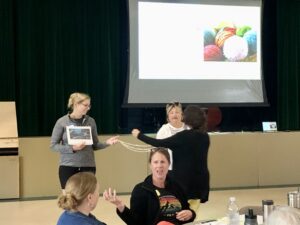
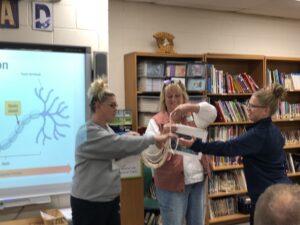
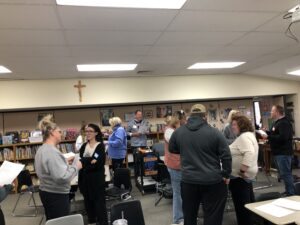
Data Supports the Need for Reflection and Peer Conversation
Our participant surveys indicate that teachers want time to reflect and process their learning during the session rather than after. A staggering 92% of our participants agreed or strongly agreed with this statement, with only 8% remaining neutral. Additionally, 83% of teachers believe in the benefits of peer conversations during these workshops, reinforcing the importance of structured collaboration time. This aligns with research from the National Staff Development Council (now Learning Forward), which emphasizes that sustained, collaborative professional learning leads to improved teacher practice and student outcomes.
Effective teacher professional development programs are not just about content; they are about creating an environment that nurtures enthusiasm and collaboration among educators. When faculty members are invested, feel valued, motivated, and empowered, students benefit from improved teaching and learning experiences.
Key Elements of Effective Teacher Professional Development Programs
According to research by Darling-Hammond and colleagues (2017), effective professional development includes the following key elements:
- Content-Focused – PD should be directly relevant to teachers’ subject areas and instructional challenges.
- Active Learning – Engaging teachers through discussions, modeling, and hands-on practice leads to better knowledge retention.
- Collaboration – Opportunities for peer learning and support strengthen professional growth.
- Sustained Duration – One-time workshops have limited impact; ongoing support and follow-ups are essential.
- Coaching and Mentoring – Providing individualized feedback and support enhances implementation.
- Reflection and Feedback – Time for reflection and structured dialogue increases engagement and application
Let Us Custom-Design Your Next Professional Development!
Empowering teachers for success, our hands-on workshops guide teachers to implement new instructional strategies effectively. By incorporating research-based strategies, differentiated instruction, and meaningful collaboration, we ensure professional learning that truly impacts teaching and learning.
Let’s work together to design an engaging and effective PD experience for your faculty.
Contact KM Educational Consulting for your professional development and instructional coaching needs!
Unclock your school’s potential.
References
Darling-Hammond, L., Hyler, M. E., & Gardner, M. (2017). Effective teacher professional development. Learning Policy Institute. https://learningpolicyinstitute.org/product/effective-teacher-professional-development-report
Garet, M. S., Porter, A. C., Desimone, L., Birman, B. F., & Yoon, K. S. (2001). What makes professional development effective? Results from a national sample of teachers. American Educational Research Journal, 38(4), 915-945.
National Staff Development Council. (2009). Professional learning in the learning profession: A status report on teacher development in the U.S. and abroad. Learning Forward. https://learningforward.org/wp-content/uploads/2017/08/status-of-professional-learning-phase-1.pdf
